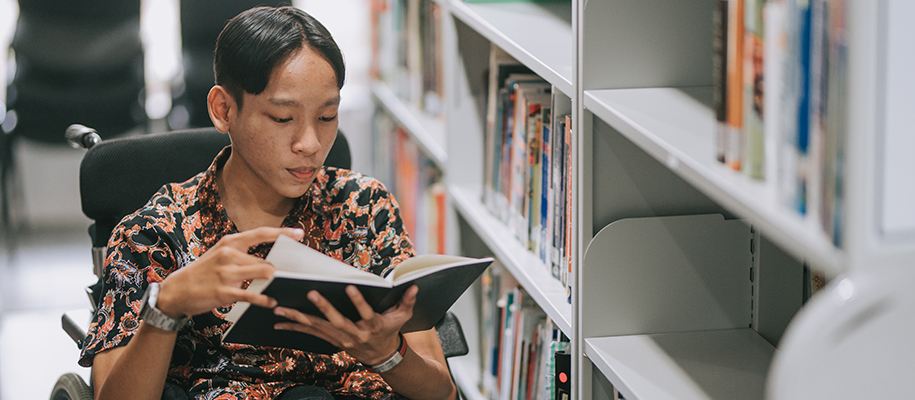The career opportunity gap for BIPOC students is inextricably linked to the college access gap. In light of the multifaceted challenges of dismantling systemic and institutional racism, education appears to be the most effective key to unlocking expanded opportunities for young BIPOC people. And yet the very lever we’re trying to pull to enact more permanent improvements and possibilities in students' lives is still pretty flawed—and the pandemic certainly hasn’t helped change this. Here’s a look at what this lack of opportunity looks like and ways colleges and others should be rethinking accessibility for underserved communities.
The lack of opportunities underserved communities face
What many in the education sector have come to understand as “summer learning loss”—a phenomenon where under-resourced students can lose up to three months of learning gains during the summer months when access to academic enrichment is limited—snowballed into an avalanche of inequity during the pandemic as under-resourced schools scrambled to corral resources to execute remote and hybrid learning models that left (and still leave) teachers and students exhausted.
Not surprisingly, many students in these underserved communities have also faced greater uncertainty about the college admission process. Though many colleges and universities have limited the use of standardized testing in admission decisions because of access issues, families are still grappling with how students’ grades and extracurricular experiences will be measured during these chaotic times. Households that once got by with only one family computer before the pandemic are now challenged with providing technology for multiple students for an extended period of time—and in some cases, students have to compete with parents working from home for screen time. In addition, college-bound BIPOC students have to contend with COVID-19’s disproportionate impact on communities of color and the consequentially disproportionate economic and mental health impact on their families. Furthermore, as if the pandemic wasn’t enough, the groundswell of political and social unrest following the murder of George Floyd and the youth-led activism the event led to have added to the existing burdens of “extra labor” that BIPOC students endure.
Related: Q&A: All About the Opportunity Gap for BIPOC Students
Rethinking college accessibility
Sometimes mass disruptions can lead to real change—people start to imagine the future and its possibilities differently when everything they think they know is either compromised or disappears completely. This moment offers the perfect time to rethink college access and the college-to-career pipeline. School districts should be partnering with tech companies to close the technology gaps facing families and ensure students have access to the tools they need. Policymakers should make high-capacity internet a right, not a luxury. Corporations should expand incentives for employees who volunteer with education and college access organizations to ensure more students get the individualized attention they deserve as they embark on their college application journeys. We should be increasing collaboration between K–12 schools and public higher education institutions to ensure public colleges and universities are truly reflective of the communities whose tax dollars support them.
The problem with EFC
Eliminating the “Expected Family Contribution” (EFC) from the college financial aid process is a great first step to a more holistic approach to college affordability and access, but we should also acknowledge that for students who don’t benefit from generational wealth, the balance between prestige and economic progress is a delicate dance. For example, Black and Latinx students are more likely to graduate from college with higher debt while still facing the kind of racism at work that results in lower wages than their White and Asian counterparts.
Related: Important Things to Know About Your EFC
The importance of inclusive student support resources
Colleges and universities need to assess their student support programs and adjust them for the realities that so many of their students from every walk of life have faced over the last year. Leadership and college pipeline organizations, such as Oliver Scholars, are striving to help students continue to achieve their goals at high levels during the pandemic. From its very inception, Oliver Scholars leadership understood that the college access and opportunity gap for BIPOC students is also a leadership and success gap for America. McKinsey reports have found that organizations in the top quartile of racial and ethnic diversity in top leadership roles were 35% more likely to have financial returns above their industry median, while firms in the bottom quartile of racial, ethnic, and gender leadership diversity were nearly 30% less likely to have financial returns above their industry median. During the past three and half decades, we’ve built a youth organization that stands firmly on three pillars: leadership, scholarship, and service. We set out to give deserving, gifted BIPOC students access to a more rigorous secondary school and college education as well as a clearer pathway to success. We know when our students win, their families, communities, and the country at large wins too.
Related: School Spotlight: 7 Non-HBCUs That Support Black Students
We’re counting on colleges and universities in the US to modify their approach to student success for incoming freshmen. What’s seemed like an overwhelming period of disruption can become the opportunity we needed to transform institutions and create a more equitable society. We just have to be relentless in our efforts to do it.
Follow CollegeXpress on Facebook, Twitter, and Instagram for daily updates on more important information and conversations like this!






